At the beginning of this semester, I thought that we would just be reading recipes for 16 weeks because that was the only type of “rhetoric” that I associated with food. I now know that the rhetoric of food is much more than simple step-by-step directions for how to make a meal. Throughout our assigned readings we have been able to see that food can be used to define a culture. Culture-focused food writing is used to unite people of the same culture by using terms that are familiar to them. At the same time, it also allows for people outside of the group to learn more about the culture just by reading about the dishes they cook. The tone of the piece drastically changes depending on who it is primarily being written for. An engineer-aimed recipe will be short with visuals included. That same recipe more aimed towards women could be much longer and include a touching backstory. Both pieces end with the same dish but have drastically different ways of getting there. There is not one standard way of writing about food, just as there is no standard way of preparing a dish. The people that write about food have just as much freedom as the people that make it to express their feelings and identity.
The best readings of RHE309K
Assigned Reading
My favorite assigned reading for this class was “A Guide to Venezuelan Arepas”. Everything about the piece was very colorful– from the writing to the actual display itself. The post was very interactive and engaging which made for an easy read. I also really enjoyed the cultural aspect of this post. It showcased the very strong connection that this dish has with Venezuelan culture.
http://luckypeach.com/guides/guide-venezuelan-arepas/
Independent Reading
My favorite independently chosen reading for this class was “Lost Crops of Africa: Volume III: Fruits”. Discovering this piece caused me to completely redesign the purpose of my annotated bibliography. The dedicated chapter to tamarind in this book covers a lot of good background information on the fruit. This reading showed me that tamarind is much more than just a fruit in some cultures– it also has spiritual, economic and medical significants.
Staple Kale and Black Beans
Today I’m sharing a recipe that has been one of my staples in college. It takes all of about 10 minutes and less than $10 to make. Plus, if you follow all
of the ingredient amounts, the recipe usually yields about enough for 4 meals for me. So without further ado, let’s get started!
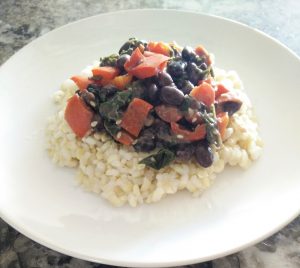
Peru’s Gastronomic Boom
Follow the link for a brief overview of Peru’s food culture and how it’s exciting the culinary world, one causa at a time.
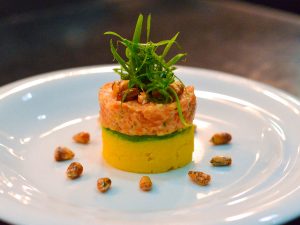
Causa (Potato Casserole) | Kevin Cooks | Serious Eats
https://docs.google.com/document/d/1La3dH87OtacnZdvyjI9OA-4ICCpTPbzTNrcsUBR8AIc/edit?usp=sharing
Migas Quiche
MIGAS QUICHE
We all know the feeling: waking up on a Sunday morning with a pounding headache and an apprehensive curiosity as to how much money you spent at the bars (and on that slice of meat-lovers pizza at 2 a.m.) the night before. You stumble into the kitchen anxiously awaiting a breakfast taco buffet that will serve as the cure to your hangover, but as expected, an empty carton of milk and last week’s Chinese take-out stare blankly back at you from the empty shelves in the fridge. You could cave in and eat those borderline rotten rice noodles, OR you could sink your teeth into a warm, fluffy quiche that you made the day before that will certainly be the ailment to all of your hangover problems.
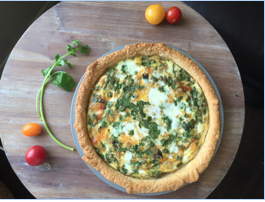
Ingredients
6 eggs
¾ c milk
½ c onion, chopped
½ c tomato, diced
½ c shredded cheddar cheese
1 c corn tortilla chips, lightly crushed
1 jalapeno, finely chopped
1 premade pie crust
1 T cilantro, chopped
1 T butter
Directions
Preheat oven to 375 degrees
Remove premade piecrust from fridge to bring up to room temperature
In a sauté pan heated to medium high…
- Add in butter until melted
- Add onions and jalapeno and let cook until the vegetables have taken on a slight char, stirring frequently
- Add tomatoes and cook until softened
- Remove from the stove top and let vegetables cool to room temperature
In a large mixing bowl…
- Crack the eggs into the bowl and add milk, cilantro, and salt & pepper for seasoning
- Whisk to combine
In a pie dish…
- Unroll piecrust into the pan and press the dough firmly against the edges
- Scatter crushed tortilla chips, sautéed vegetable mixture, and cheese around the pan
- Pour the egg mixture over the top (the pan should be quite full)
Put in the oven and bake for 35-40 minutes, or until the crust is golden brown and the top of the quiche is lightly browned and bubbly
*Avocado Crema
This *optional (but not) sauce is for the hung-over-go-getter in you. If you are feeling especially ambitious during your post-party endeavors (or want to add some class to your meal to make up for your lack- there-of the night before) top your quiche with this velvety crema to finish off the dish.
Ingredients
1 c sour cream
1 lime, juiced
¼ c milk
1 T chive, finely chopped
1 avocado
Salt and pepper to taste
Directions
In a blender, add sour cream, milk, lime juice, chive, and salt and pepper to taste. Blend until smooth.
New York Bagel Recipe
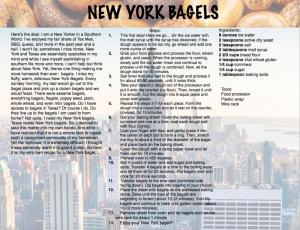
Chai 101
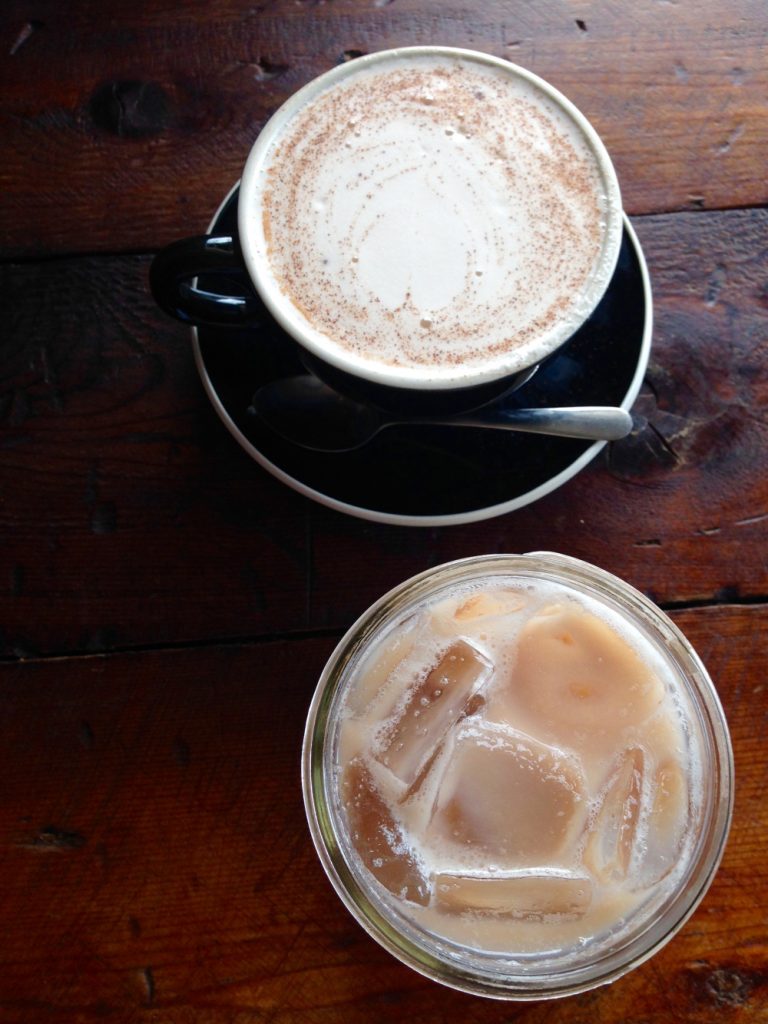
I first experienced chai in 10th grade. I was visiting my friend Michaela in Germany and we ducked into a Starbucks to escape the chilly weather. It was my first time in a Starbucks and I didn’t know where to begin. Did I want small, or a tall? Were they the same thing? Because tall doesn’t sound very small. My mind hadn’t even begun to process the crowded menu.
Thankfully, my friend ordered for me and placed a chai latte in my hands. I took one sip and knew I had a favorite drink. In a world of coffee drinkers, I had found my place. Chai tasted like Christmas in a cup and warmed me from my head to my toes.
Since then, I have tried chai lattes in countless coffee shops in countless cities. I have found though, I don’t actually know that much about my beloved tea. I know which coffee shops in Austin have the best, worst, cheapest, and most expensive chai but I don’t know the history behind the drink or what spices make chai, chai. So this is my “Chai 101,” a brief look at the history and Westernization of my favorite drink plus recipes and other tidbits. Pour yourself a cup of chai and enjoy!
Read the rest on my blog.
A Closer Look at Restaurant Reviews
Follow this link to view my annotated bibliography and learn more about restaurant reviews:
http://prezi.com/_6dw-et9xjlb/?utm_campaign=share&utm_medium=copy&rc=ex0share
Espresso Annotated Bibliography
The Use of Tamarind Across Cultures
My annotated bibliography focused on the use of tamarind across cultures. Overall, this project and the sources that I have selected to be part of my annotated bibliography emphasize the fact that food is much more than just food. I started off my project thinking I would stick to recipes from each place but quickly realized that that the cultural aspect was much more significant. Tamarind has a very strong attachment with culture as well. For each region tamarind has much more than just the sole function to feed.
https://prezi.com/voipucgetkgw/the-use-of-tamarind-across-cultures/#